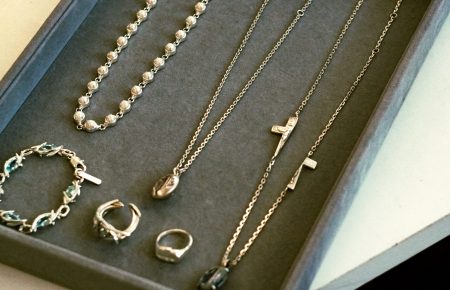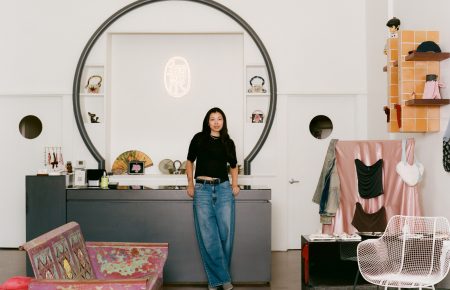Technology and fashion both serve different purposes within the branding spectrum. Technology is about reinforcing network effects and putting it into the hands of many. Conversely, high fashion creates demand through limited amounts of exclusive products. We’ve yet to see a full-fledged tech product that can be truly seen as a fashion product.
The Apple Watch was supposed to change the wearable landscape
When the Apple Watch launched some five years ago, it aimed to establish a new tech-fashion dynamic. Its partnership with Hermes was meant to be a flagship but failed to deliver. But since then, it’s clear that the intended impact of Apple in fashion is mediocre at best. Various designers have entered the space, but their impact has been minimal with a cosmetic change here and there. Watches have typically benefited from some sort of tech partnership. They include the aforementioned Apple Watch, Samsung’s Gear S with Diesel Black Gold, Intel and Opening Ceremony’s MICA smartbangle, and Tag Heuer’s own smart watches. As a category, wearables are an important part of various portfolios, Apple included.
But it can be argued that anything with a fashion angle is often seen more of a performance-additive product than a pure fashion product.
Performance negates brand and fashion
There’s a reason why certain products are unable to establish themselves as one of the other. Performance can often play a negating role in aesthetics. That is, if a product is a balance of performance and aesthetics, the larger role of performance allows for one to overlook the aesthetics. Tech has often benefited from this very relationship. We’ve come to grips with innovative performance in itself is an aesthetic, however outlandish it may be. It’s why an Acronym jacket looks the way it does or an F1 car is so far flung from the average road-going car.
In short, the more performance offered by a product, the greater opportunity that we overlook its aesthetics. And without aesthetics? It removes itself from the realm of fashion all together.
Technology and fashion aren’t in alignment
MAEKAN favorite Scott Galloway, L2 founder and professor of marketing at the New York University’s Stern School of Business, had this powerful quote: “Technology is essentially about creating utility and spreading it over billions of people. Fashion is about creating a moment, a trend, a romance and spreading it across a small amount of influential people.”
Some would argue that the iPhone has long been considered a fashion product. To an extent, yes. But in the face of emerging competitors with better technology, UX, and overall experience, Apple is especially vulnerable in regions like Asia. Once a marker of status and performance, there are other options.
Furthermore, the one notion that ties it all back together is a particularly strong insight from Eugene Wei:
“This season, the color of the moment might be saffron. Why? Because someone cooler than me said so. Tech tends to prioritize growth at all costs given the non-rival, zero marginal cost qualities of digital information. In a world of abundance, that makes sense. However, technology still has much to learn from industries like fashion about how to proactively manage scarcity, which is important when goods are rivalrous. Since many types of status are relative, it is, by definition, rivalrous. There is some equivalent of crop rotation theory which applies to social networks, but it’s not part of the standard tech playbook yet.”
Technology’s philosophy is about mass adoption, it’s challenging to do so under the guise of a tech wearable. If the (Insert_Brand_Here) x Apple Watch is limited to 500 pieces but maintains the same functionality, a regular in-line Apple watch is a perfectly fine substitute.
The background and intent of a designer matters
While tech hardware and fashion can both be uniquely beautiful, they serve different functions. In a recent interview with facewear company O2O2, founder Dan Bowden mentioned the challenges of tech-centric designers:
“We had the opportunity to work with industrial and technology designers. But they don’t really understand the human form and they don’t work with the human body as much. If this platform is going to have a human design element, we’ve got to work with people who understand this and that’s fashion. It will be core to what we’re doing. If you look at the human body, the most prominent and valuable part is the face. If we went out and started to do this overly tech sort of thing, we’d run into problems quickly. We must work with people who genuinely understand that.”
How can fashion and tech work together?
The first step would be to redefine the best of both worlds. Fashion’s unique offering is that it can immediately encapsulate movements and trends in a much shorter time frame. Designing a garment takes significantly less time than bringing a new piece of hardware to live. Technology, on the other hand, is about bettering our lives through convenience and performance. There are many emerging examples of this relationship including the Commuter x Jacquard by Google, and Jimmy Choo’s heated hiking boot. Neither fall into the same category of say an Apple watch, but they utilize fashion as a vector for messaging and ideas. As is the case with many successful collaborations, tech-infused fashion needs to meet in the middle for it to truly make moves.
Closing thoughts
Would you buy a Nokia 3310 today for more than it was worth when it first came out? Probably not, but you might pay a hefty premium on a pair of Fragment 1s instead. There’s a good reason for this: tech has a purpose and fashion has another. As things mature, tech ultimately diminishes whilst some desirable fashion goods increase in value. As fashionable objects become rare, they tend to increase in value, none more so than pristine items. Fashionable items also have set purposes. I don’t expect bags to be completely different in purpose in 200 years, but I expect communications to be improved. Tech ultimately is finite and quickly obsolete whilst fashion retains a different purpose altogether. Perhaps the best way to merge both is instead to use base models with interchangeable parts: this will preserve aesthetics whilst keeping with the times with the latest hardware.




























